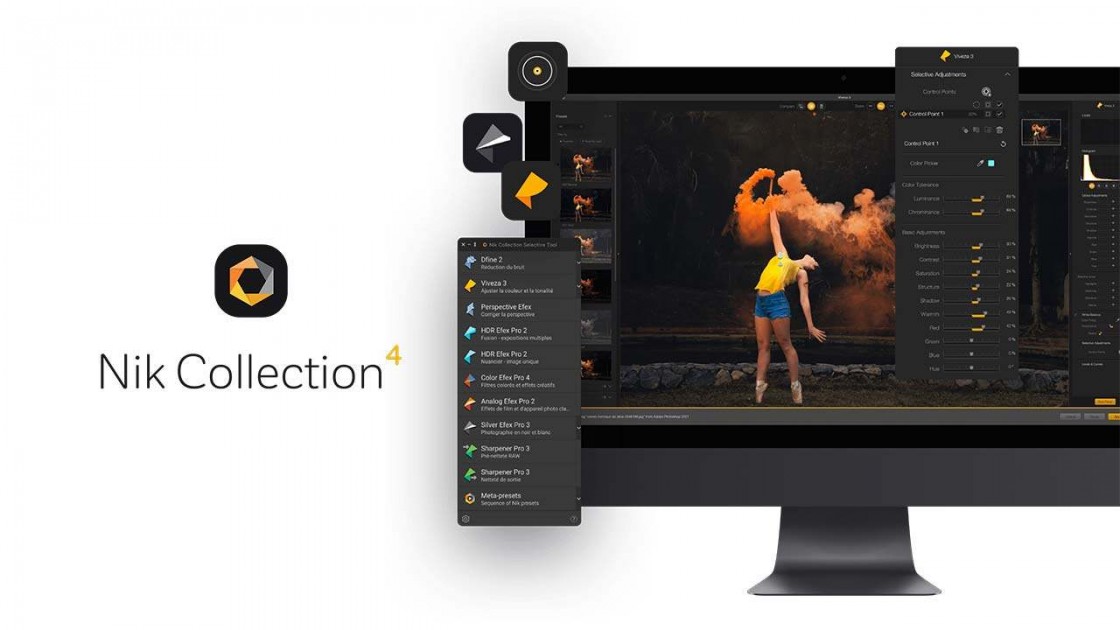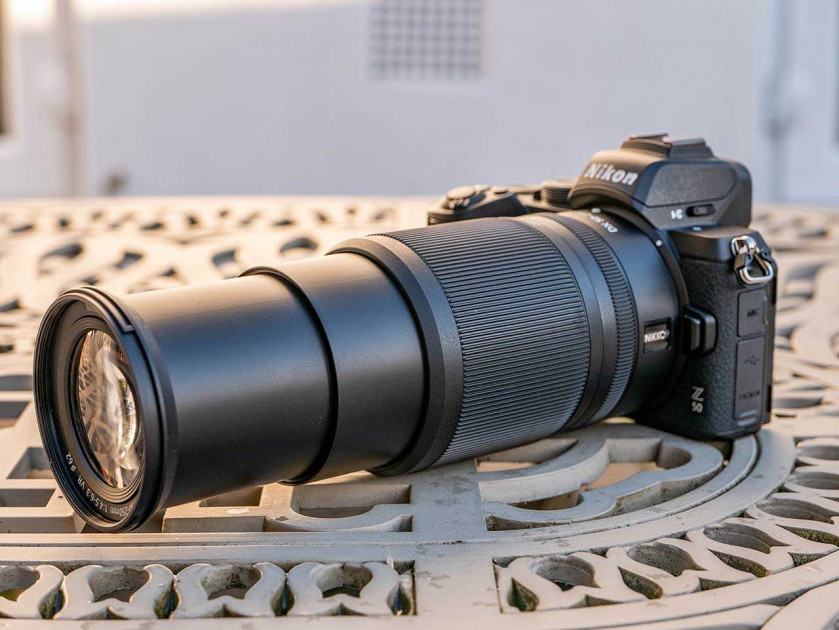
Introduction
The Nikon Z DX 50-250mm F4.5-6.3 VR is a versatile super-telephoto 5x zoom lens for Nikon DX APS-C sensor mirrorless cameras, where it provides a 75-375mm equivalent focal length in 35mm full-frame terms.
The Z DX 50-250mm F4.5-6.3 VR for Nikon was first announced in October 2019. This lens is made in Thailand.
It features 16 elements in 12 groups, including one extra-low dispersion element to help limit spherical aberrations and distortion, while the Super Integrated Coating suppresses flare and ghosting.
The Nikkor Z 28mm has a minimum focusing distance of 50cm / 1.64ft with a maximum magnification of 0.23x.
It features a rounded 7-blade diaphragm which creates an attractive blur to out-of-focus areas of the image and an internal focusing mechanism which means the lens barrel doesn’t move.
This lens uses a stepping motor for fast, quiet and precise auto-focusing and full-time manual focus override is also possible.
The Vibration Reduction image stabilization system reduces camera shake by up to 5 stops for sharper handheld shooting.
The Nikon Z DX 50-250mm F4.5-6.3 VR lens is priced at £379 / $349 in the UK and USA, respectively.
Ease of Use
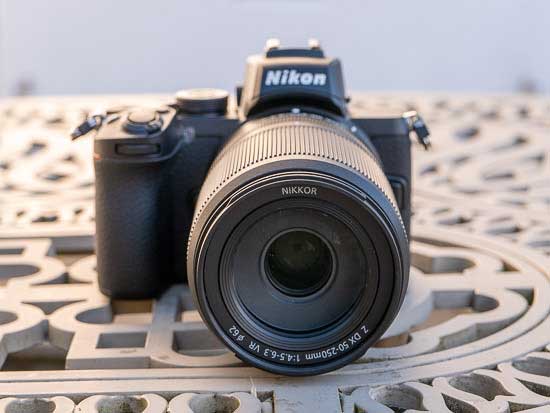
Weighing in at just 405g / 14.3oz, the plastic bodied Nikon Z DX 50-250mm F4.5-6.3 VR is very light for a super-telephoto zoom lens.
Its overall size and weight is very well-suited to a camera like the Nikon Z50 that we tested it with, as shown in the product photos.
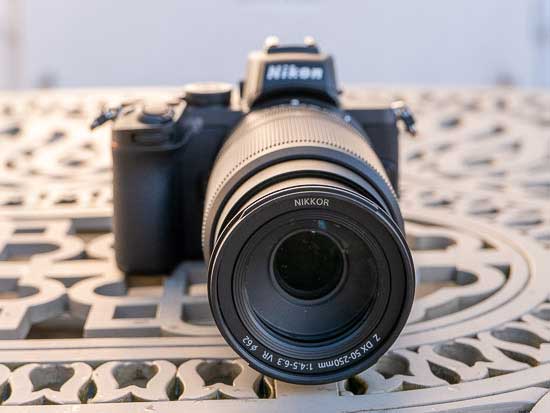
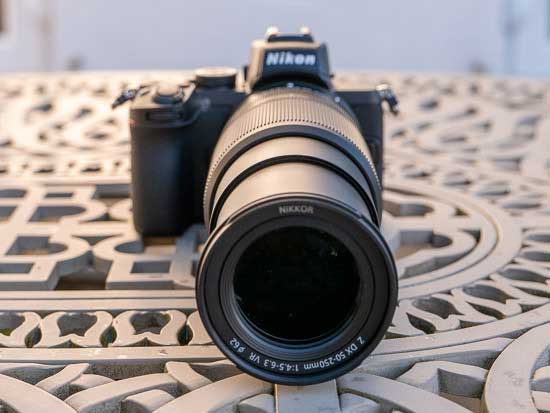
It measures 74 x 110mm / 3x 4″ when set to the 50mm focal length, making it one of the smallest ultra-zoom lenses currently available for Nikon’s Z-series mirrorless cameras.
This lens has a button-free retractable design – all you have to do is rotate the zoom ring to extend the lens before you can press the shutter button to take a picture.
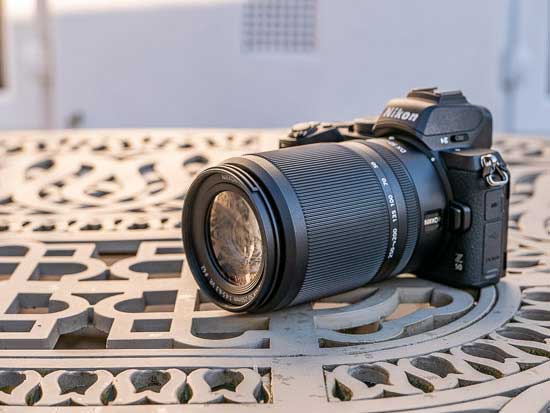
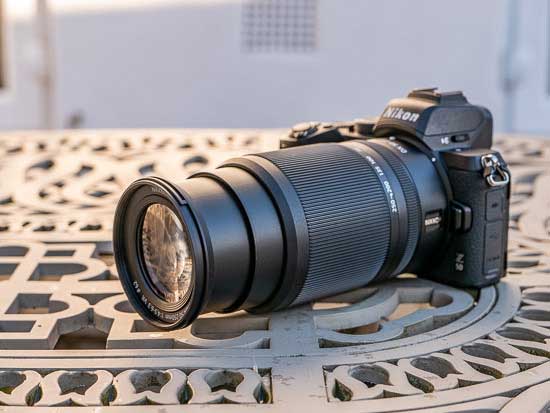
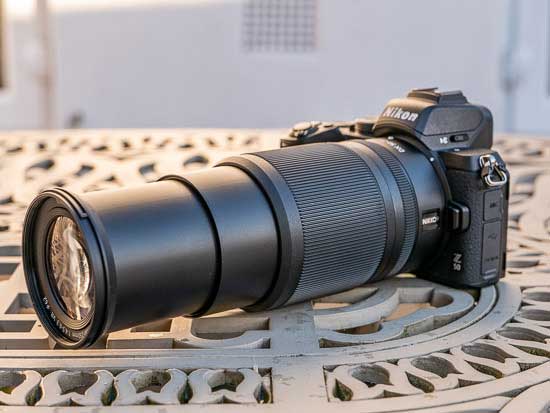
When the lens is retracted, it’s locked into place so it won’t extend unexpectedly.
The lens is longest when extended to the 250mm focal length, where it adds another 8cm to the overall length.
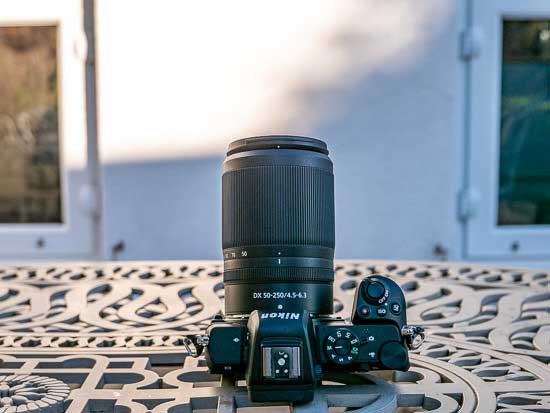
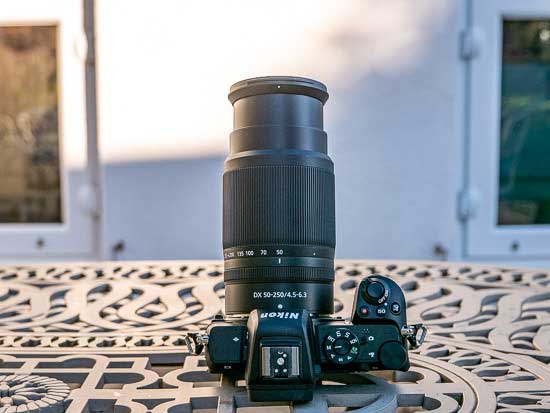
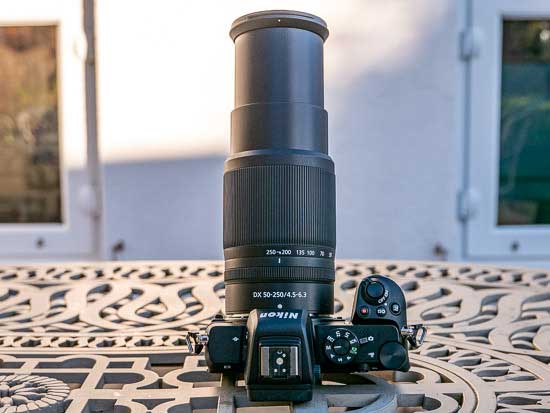
Build quality is fine, exceeding what you might expect from such an affordable zoom lens, although the all-plastic construction may prove less durable in the long-term.
It incorporates a plastic mount, rather than metal, and a plastic lens barrel with just two controls, the generously sized focusing ring and the programmable control ring.
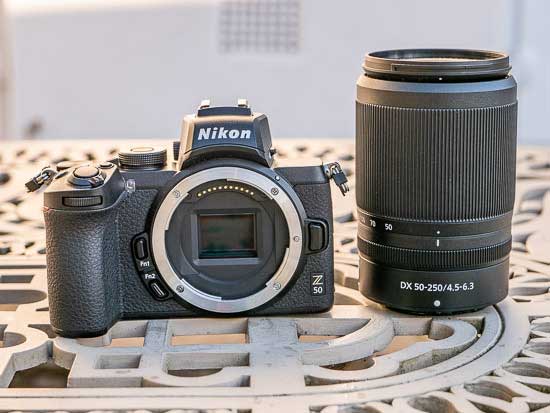
You can use the control ring to manually focus by default, but you can customise it to access various camera functions, such as aperture, ISO speed or exposure compensation. This is something you can set via the camera’s main menu and can be quite handy in certain circumstances.
Perhaps understandably given the modest asking price, this lens does not have a dust- and moisture-sealed design to support shooting in more inclement conditions.
The Nikon Z DX 50-250mm F4.5-6.3 VR lens accepts 62mm filters via plastic threads on the front of the lens.

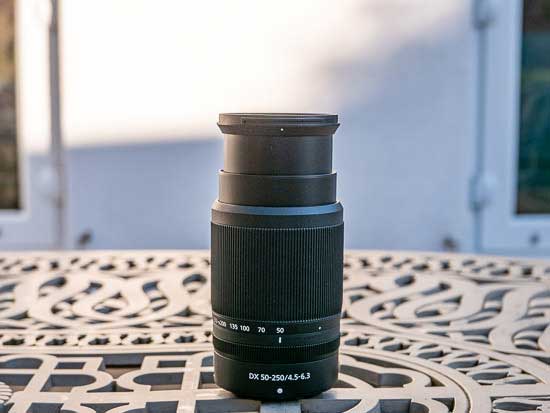
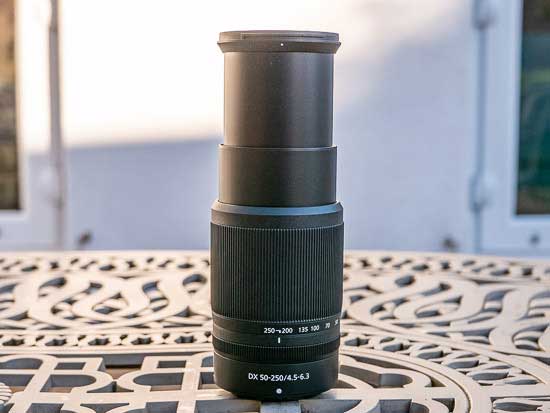
The lens features built-in optical image stabilisation which offers 5 stops of compensation, rather than relying instead on the camera body’s stabilisation system.
The Nikon Z DX 50-250mm F4.5-6.3 VR lens has a ridged motor-assisted focus ring that is quite nicely damped. Manual focusing is possible by selecting it on the camera body or full-time manual focus override is also possible when in AF mode.
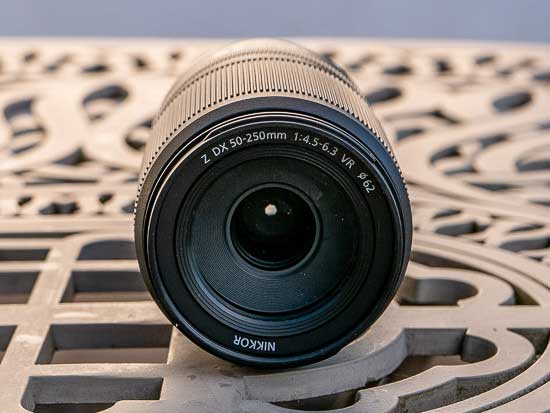

As the the focus ring is not mechanically coupled, there are no hard stops at either end of the range, making it a little more difficult to set focus at infinity. Polariser users should be pleased that the 62mm filter thread doesn’t rotate on focus.
The Nikon Z DX 50-250mm F4.5-6.3 VR lens utilises a stepping AF motor that produces almost silent, smooth and quite snappy auto-focusing, making it well-suited to shooting both stills and video, with the overall lens length remaining constant during focusing.
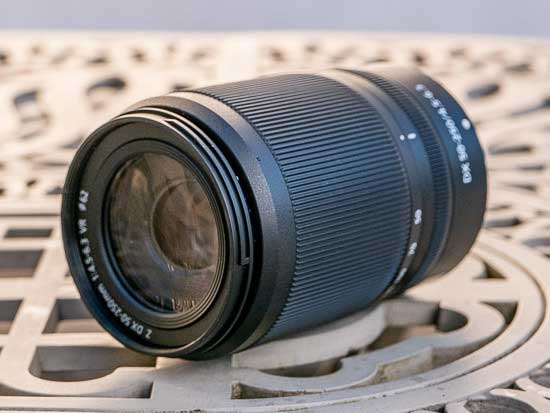
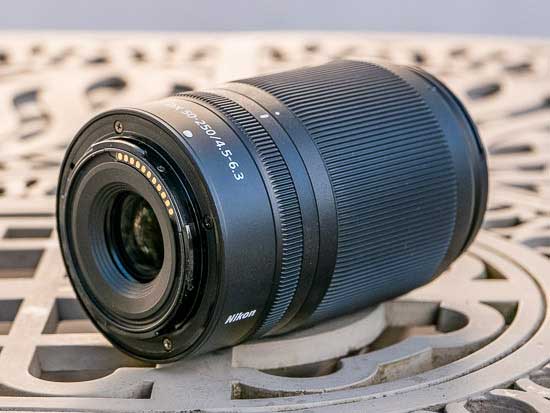
When it comes to auto-focusing, it proved to be a fairly quick performer on the Nikon Z50 camera that we tested it with.
We didn’t experience very much “hunting”, either in good or bad light, with the lens accurately focusing most of the time.
This lens only ships with front and rear lens caps – there is no lens hood or any kind of case included in the box.
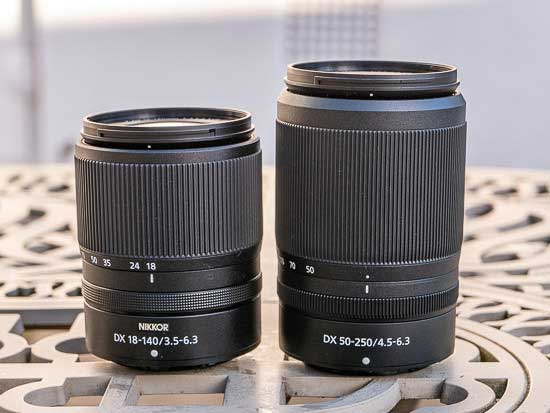
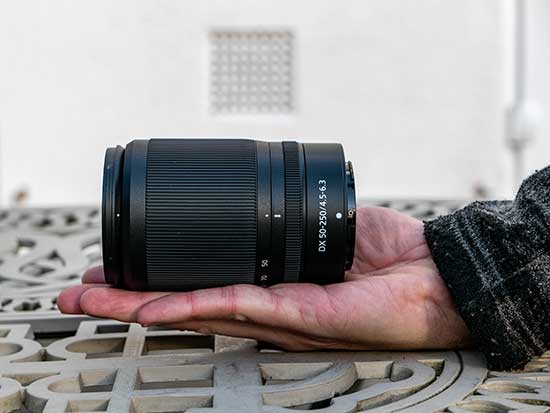
Focal Range
The 50-250mm focal length range provides an angle of view of 31° 30′ to 6° 30′ on a DX-format APS-C camera, which is equivalent to a 75-375mm focal length in 35mm full-frame terms.

50mm

250mm
Chromatic Aberrations
Chromatic aberrations, typically seen as blue or purple fringes along contrasty edges, were not really apparent in our test shots, only appearing in very high contrast areas.


Vignetting
With the Nikon Z DX 50-250mm F4.5-6.3 VR lens set to its maximum aperture, there is obvious light fall-off in the corners, requiring you to stop down by at least 3 f-stops to completely prevent it.

50mm

250mm
Distortion
Commendably there’s not too much pin-cushion distortion evident, in either the JPEG or RAW files.

50mm

250mm
Sunstars and Flare
The Nikon Z DX 50-250mm F4.5-6.3 VR produces quite nice sunstars when set to 50mm and stopped-down to f/22 or greater, as shown below. Flare is well controlled even when shooting directly into the sun without a lens hood fitted.
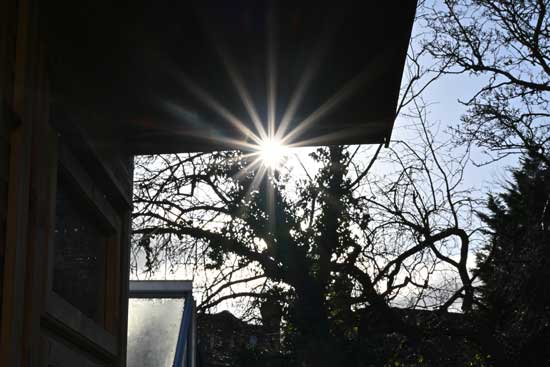

Macro
The Nikon Z DX 50-250mm F4.5-6.3 VR is quite a good macro lens, offering a close minimum focusing distance of 0.5m / 1.64ft at the 50mm focal length and 1.0m / 3.29ft at the 250mm focal length, with a maximum magnification of 0.23x. The following examples demonstrate how close you can get to your subject.






Bokeh
Bokeh is a word used for the out-of-focus areas of a photograph, and is usually described in qualitative terms, such as smooth / creamy / harsh etc.
In the Z DX 50-250mm F4.5-6.3 VR lens, Nikon have employed an iris diaphragm with 7 rounded blades, which has resulted in quite appealing bokeh, especially at the longer telephoto focal lengths.
We do realise, however, that bokeh evaluation is subjective, so we’ve included several examples below for your perusal, all shot wide-open.





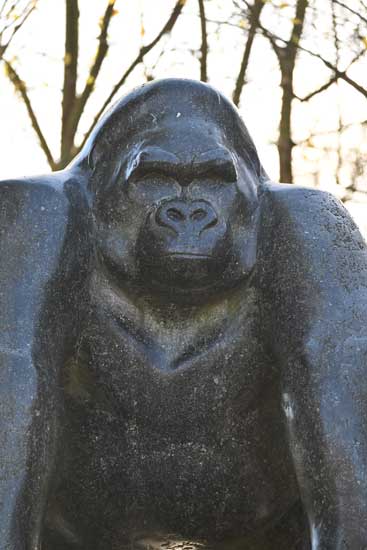

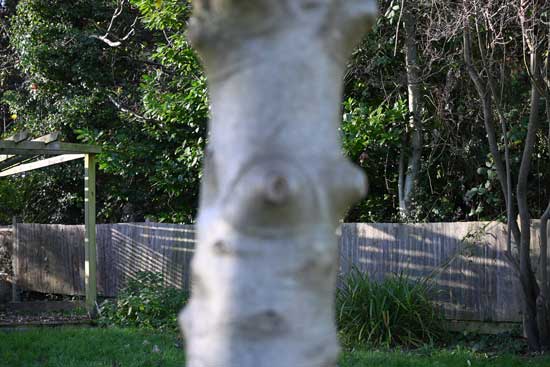

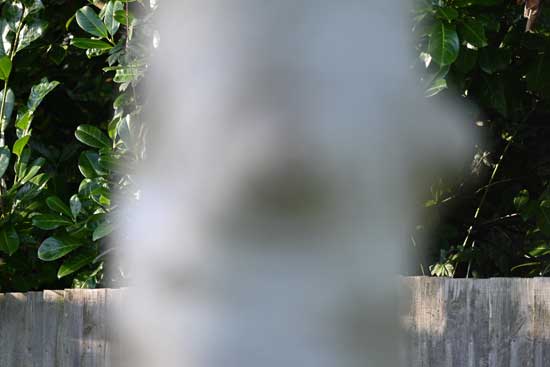
Sharpness
In order to show you how sharp the Nikon Z DX 50-250mm F4.5-6.3 VR lens is, we are providing 100% crops on the following pages.


